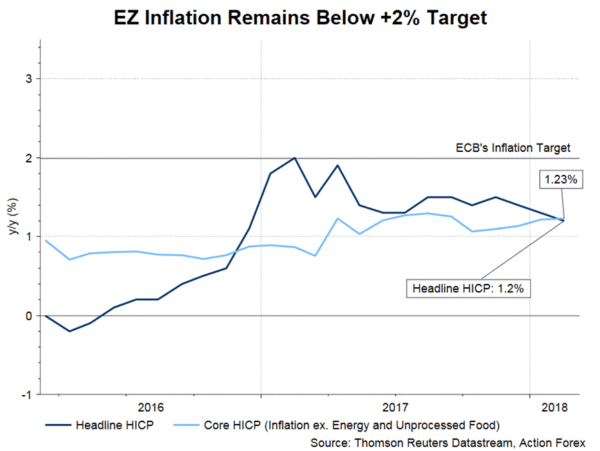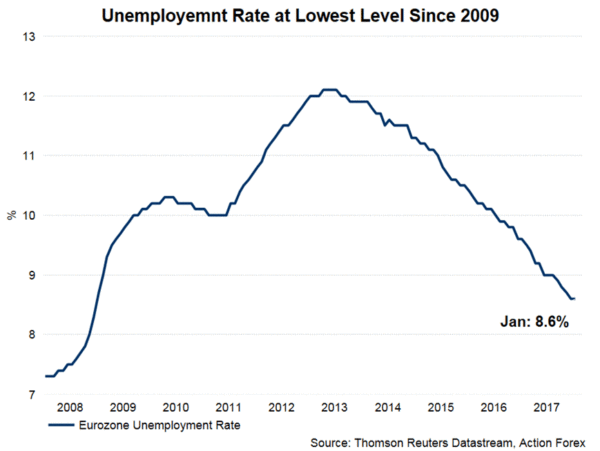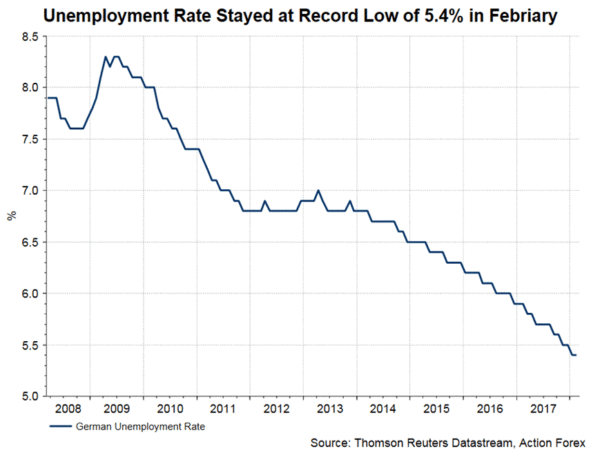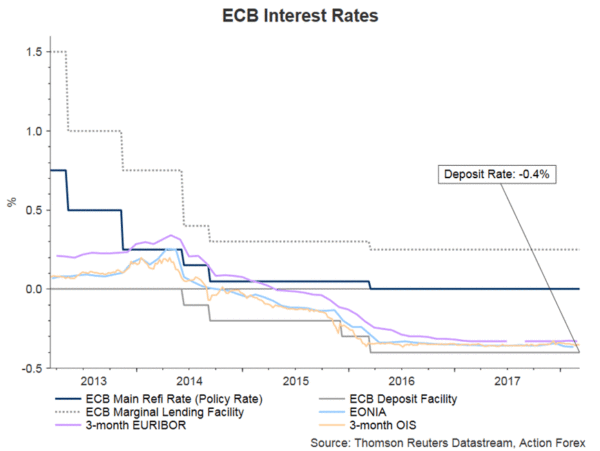Surprising to most market participants, ECB dropped the easing bias in the forward guidance. While this had initially sent the euro slightly higher, it reversed as President Mario Draghi reinforced that the act was ‘backward looking’ and would not affect future monetary decision making. Policymakers remained confident over the growth outlook but again raised concern over weak inflation. As such, the updated economic projections saw upgrades in the growth but downgrades on inflation outlook. Going forward, the focus is on the tapering process of ECB’s asset purchases which stay at a monthly pace of 30B euro. Meanwhile, ECB’s forward guidance would gradually focus more on the interest rate path, and its relations with inflation.
The eyebrow-raising decision was removal of the language that, ‘if the outlook becomes less favourable, or if financial conditions become inconsistent with further progress towards a sustained adjustment in the path of inflation, we stand ready to increase the asset purchase programme (APP) in terms of size and/or duration’. Removal of the easing bias signaled less stimulus going forward. However, at the press conference, Draghi stressed that the unanimous decision was ‘substantially a backward-looking decision without signals or implications for either our expectations or our reaction function’. He emphasized that ‘key ECB interest rates to remain at their present levels for an extended period of time and well past the horizon of our net asset purchases’. Meanwhile, he reaffirmed that the asset purchase program remained in effect.
On economic developments, the members were confident that ‘Incoming information, including our new staff projections, confirms the strong and broad-based growth momentum in the euro area economy, which is projected to expand in the near term at a somewhat faster pace than previously expected’. Inflation remained subdued. Yet, the members were confident that the robust growth outlook suggested that inflation would ‘converge towards our inflation aim of below, but close to, 2% over the medium term’. Some more time might be needed for core inflation ‘show convincing signs of a sustained upward trend’. While the risks remained broadly balanced, ECB explicitly indicated the negative impacts of protectionism noting that ‘downside risks continue to relate primarily to global factors, including rising protectionism and developments in foreign exchange and other financial markets’.
The latest staff economic projection revealed upward revision for growth this year. Annual real GDP is estimated to expand by +2.4% in 2018, up from +2.3% projected in December. Growth forecasts for 2019 and 2020 stayed at +1.9% and +1.7%, respectively. Downward revision on inflation forecasts for 2019 was probably another reason for the dove to dump euro. The staff estimated headline CPI to be at 1.4%, +1.4% and +1.7% for 2018, 2019 and 2020, respectively. While the estimates for 2018 and 2020 stayed unchanged from December’s projections, that for 2019 was -0.1 percentage lower.
On the policy outlook, the focus is on the tapering process of ECB’s asset purchases which stay at a monthly pace of 30B euro. Note that the central bank maintained the language that the net asset purchases ‘are intended to run until the end of September 2018, or beyond, if necessary, and in any case until the Governing Council sees a sustained adjustment in the path of inflation consistent with its inflation aim’. However, the current economic development signal QE extension beyond September is unnecessary. Meanwhile, ECB’s forward guidance would gradually focus more on the interest rate path, and its relations with inflation. On the policy rate, the first thing to deal with is the negative deposit rate. We believe ECB would stress, when the time comes for bringing the deposit rate back to positive territory, that this does not indicate the beginning of a rate hike cycle.


















